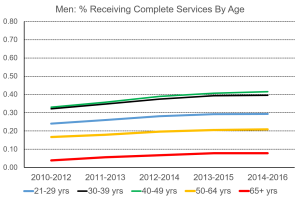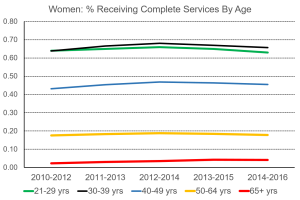The team at PolicyMap.com created a widget for us to dispaly interactive maps showing the locations of populations at risk of severe COVID-19. The at risk populations we mapped are: the number of people 65 years and older; number of people 75 years and older; the numbers of people with underlying chronic conditions linked to severe COVID-19 disease; and the number of hospital beds (note that at any given time in the U.S. about 66% of beds are occupied by patients). Click the “New Map” button to see a drop down of the available data.
Follow Us On:
Subscribe to Blog via Email
Search the site:
-
Recent Posts
- Social support and intimate partner violence in rural Pakistan: a longitudinal investigation of the bi-directional relationship
- Overflowing Disparities: Examining the Availability of Litter Bins in New York City
- In New York City, pandemic policing reproduced familiar patterns of racial disparities
- The COVID-19 Pandemic as a Threat Multiplier for Childhood Health Disparities: Evidence from St. Louis, MO
- Lessons Learned From Dear Pandemic, a Social Media–Based Science Communication Project Targeting the COVID-19 Infodemic
Faculty Publications on:

 PubMed Feed
PubMed Feed- Partner incarceration, maternal substance use, and the mediating role of social support: A longitudinal analysis using the future of families and child wellbeing study
- Establishing registry-based mental health research in Latin America
- Adverse childhood experiences among black sexually minoritized men and Black transgender women in Chicago
- Disadvantaged groups have greater spatial access to pharmacies in New York state
- Direct potable reuse and birth defects prevalence in Texas: An augmented synthetic control method analysis of data from a population-based birth defects registry
- Screening mammography frequency following dense breast notification among a predominantly Hispanic/Latina screening cohort
- Neighborhood violent crime exposure is associated with PrEP non-use among black sexually minoritized men and transgender women: A GPS Study
- Police Harassment and Psychiatric, Sexual, and Substance Use Risk Among Black Sexual Minority Men and Black Transgender Women in the HIV Prevention Trials 061 Cohort
- Interstate Highway Connections and Traced Gun Transfers Between the 48 Contiguous United States
- Population Neuroscience: Understanding Concepts of Generalizability and Transportability and Their Application to Improving the Public's Health







